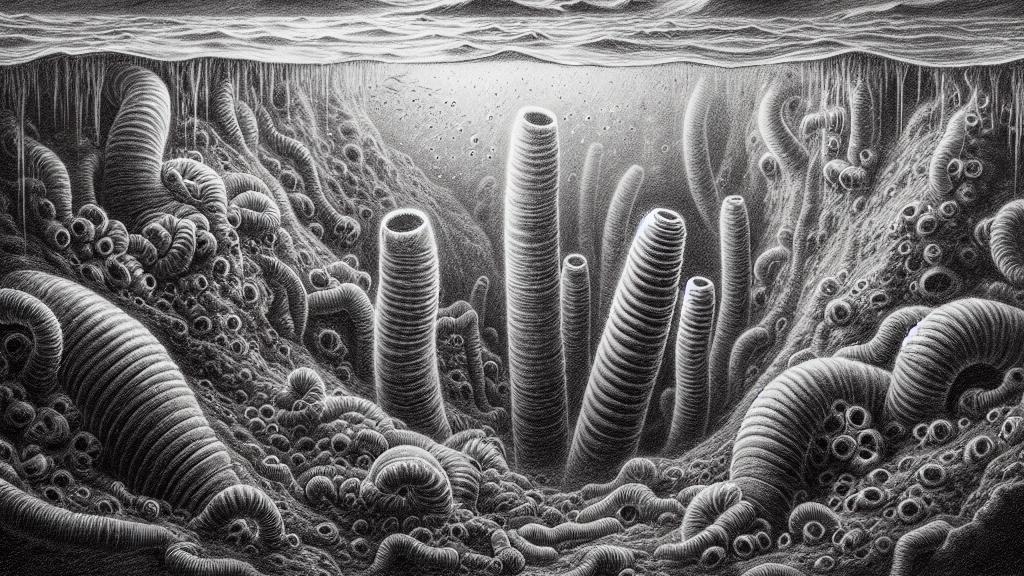Survival of Tube Worms in Extreme Deep-Sea Environments
Overview
- Giant tube worms, some exceeding 50 cm, thrive in habitats near hydrothermal vents.
- These unique ecosystems challenge traditional notions of how and where life can exist.
- Recent research reveals intricate reproductive behaviors beneath the seafloor.

Astonishing Discovery of Tube Worms
In a stunning revelation during an expedition near the Galápagos Islands, researchers discovered enormous tube worms, some growing over 50 centimeters, thriving in isolated cavities beneath the ocean floor. This fascinating finding occurred along the East Pacific Rise, an area shaped dramatically by the meeting of tectonic plates. Despite the harsh conditions—boiling water and toxic minerals erupting from hydrothermal vents—these remarkable life forms endure, showcasing nature's resilience. They not only survive but also reproduce in this extreme environment, overturning previous assumptions that life at such depths could only be microbial. The work conducted by the Schmidt Ocean Institute opens exciting avenues for understanding deep-sea ecosystems.
Hydrothermal Ecosystems: Nature's Marvels
Imagine a vibrant ecosystem where boiling, mineral-rich water—exceeding 400 °C—spouts from the ocean floor. Hydrothermal vents, resembling geysers, create a thriving hub of life in the seemingly inhospitable deep-sea, defying expectations. Here, tube worms and other fascinating organisms rely on chemosynthesis, a process that allows them to transform toxic minerals into energy, rather than relying on sunlight as most life does. This remarkable adaptation not only sustains them but also supports a diverse community of organisms that depend on these vent habitats. The interplay of heat, pressure, and minerals illustrates just how diverse and adaptable life can be, even in the most extreme conditions imaginable.
New Insights into Ecosystem Dynamics
The revelation that complex organisms, such as tube worms, thrive beneath the seafloor leads to profound implications in marine biology. These discoveries ignite curiosity about their life cycles and the intricate relationships within these ecosystems. For instance, the researchers propose that tube worm larvae may be swept through ocean currents before settling around the vents, suggesting a captivating method of dispersal that had previously gone unnoticed. This understanding not only enriches our knowledge of marine resilience but also emphasizes the intricate connections that sustain life in extreme environments. As scientists continue to explore these uncharted territories, each new finding reveals the extraordinary potential of life on Earth and inspires a sense of wonder for what lies beneath the waves.

Loading...